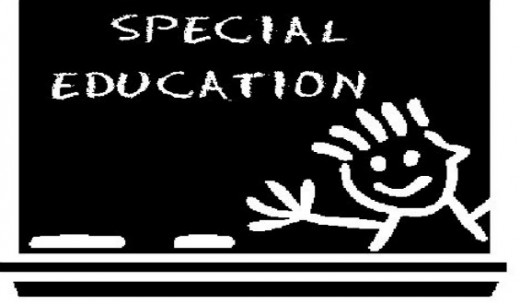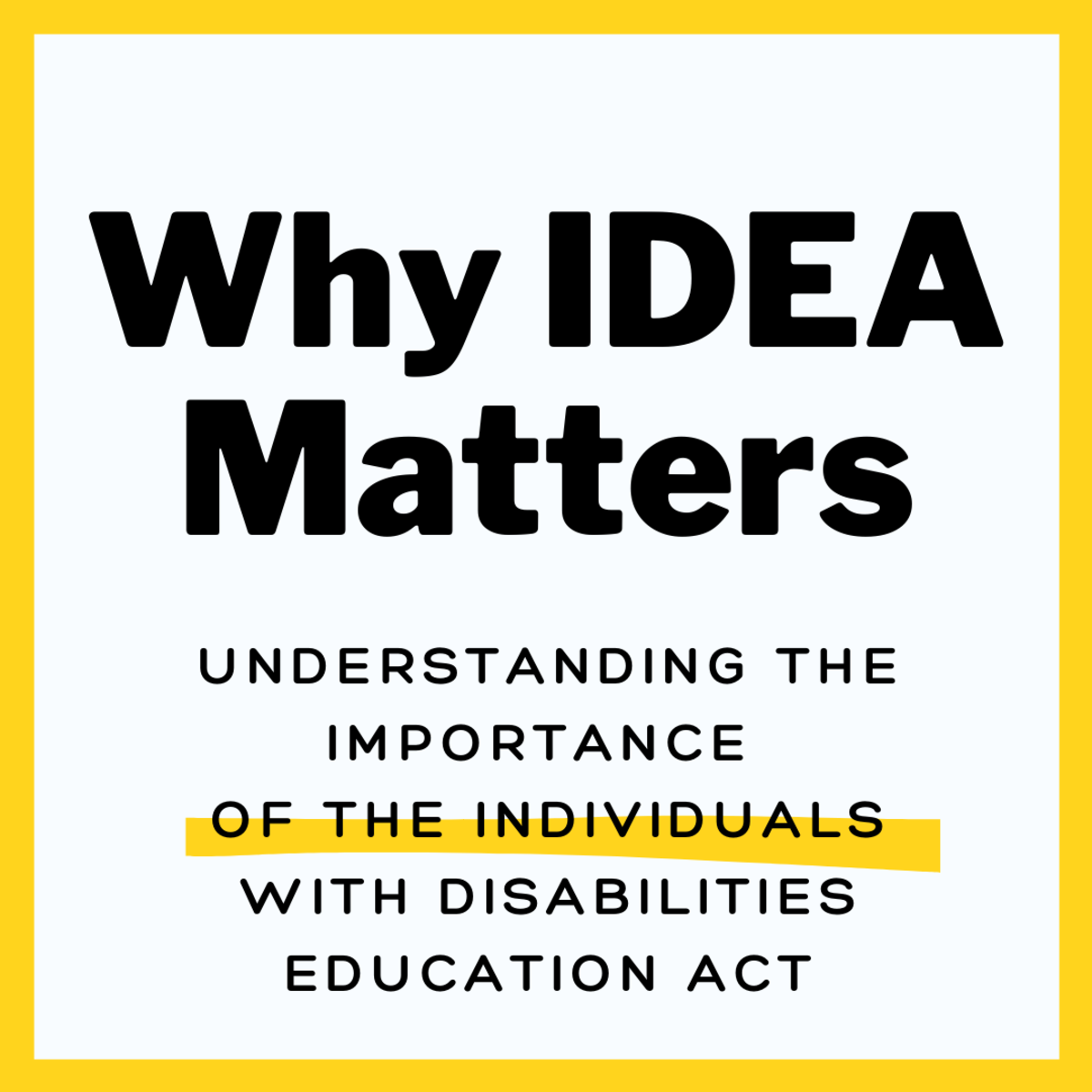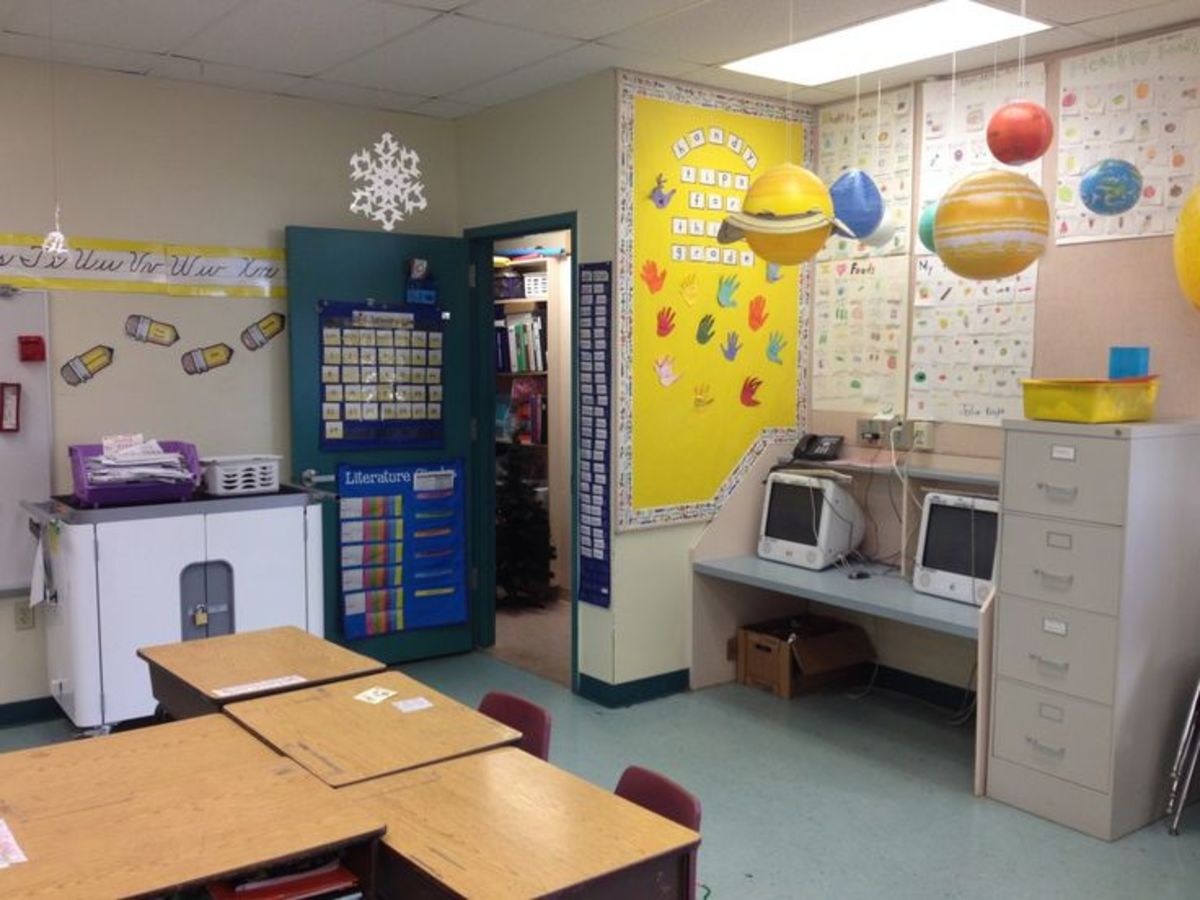Classifying Students For Special Education.....The Issues, Challenges and Needs
How Students Are Classified for Special Education Services

What Categories Classify a Student For Special Education Services?
Since the passage of IDEA (Individuals with Disabilities Education Act) in 1975 there has been an indefinite need to classify students who fall under the category of qualifying for special education services. IDEA mandates that students who qualify for services should be provided direct services related to their disability. Under the auspices of IDEA, there are 13 different categories that would qualify a student for special education services.
Currently, the categories that would qualify a student are: autism, deafness, deaf/blindness, hearing impairment, mental retardation, multiple disabilities, orthopedic impairment, other health impairment, serious emotional disturbance, specific learning disability, speech and language impairment, traumatic brain injury and visual impairment (NICHY, 1995).
The determination for classification generally depends upon assessment of a student’s achievement and intellectual levels. If the student qualifies under IDEA, then he/she would be eligible to receive services that are in direct relation to the disability in question (Luger & Zelma, 2000). Although this system seems to be error free, there are many problems with the categories that are represented by IDEA.
What's Wrong With Our Current System of Classifying Students For Special Education?
First, the IDEA classification system is more widely used as an assessment/classification tool than the DSM-IV (Diagnostic and Statistical Manual) for school practitioners. However, such a system is lacking in empirical support for IDEA’s system (Reynolds & Gutkin, 1999). The problem lies within the fact that IDEA is merely a system that focuses on determining eligibility for services rather than determining effective treatment plans. In fact, Reynolds & Gutkin (1999) indicate that even child psycho-pathologists are relying on the use of the DSM-IV, as it is more refined than IDEA’s system. One might wonder whether this system is in fact valid and reliable. Due to the lacking data supporting such classifications, it might be difficult to ascertain whether this system is indeed a true measure of disability. While there are many categories, what evidence do we have that there is data or for that matter research supporting the categories within the confines of this system.
Secondly, while special education services are needed in many cases, there may be a problem with the way we as professionals make a determination for such services. It is clearly stated that evaluations for services include many different methods and team members (Luger & Zelma, 2000). However, no clear measures are identified, leaving the professionals to interpret this as they wish. While it is clear that a student who is referred for services be tested, observed, and evaluated in his/her native language, it is obvious that this may not always occur. In fact, in some cases students will often be provided generic tests in order to qualify them for services. There is no mention within IDEA of specific tests that would be better to use. For instance, the WRAT (Wide Range Achievement Test) is a tool commonly used by schools because it is economical to use and relatively easy and quick. This achievement test is by no means the best measure to use. Any professional knows that there are other achievement tests which are more reliable and valid to use (ie.Woodcock Johnson-Revised).
In order for this system to be a better representation of true special education categories, tests which are normed and standardized on such populations should be utilized. IDEA needs to indicate that specific measures need to be used, instead of stating that a student will be assessed.
Next, IDEA does not appear to address the fact that some of the students that may fall within one of the categories could be a learner whose primary language is not English. I have seen this in many cases. Students who speak a language other than English may not always qualify for special education. Instead, they may need ESL (English as a Second Language) services. However, schools will often test them for special education services and provide such services, when in fact they do not need them. I have generally seen these students fall into the speech category because it is believed that they do not possess appropriate language capabilities. This issue needs to be addressed by IDEA, as many of these students are not being provided appropriate services.
Finally, while it is important for students who exhibit disabilities (and I use this term lightly) to receive "adequate" services, this is often a misnomer. For those students who receive emotional support services special education is a detriment to their success (in many cases). Students with serious emotional disturbance are often placed in classes that are smaller in size so that behavioral needs/problems can be addressed. However, such classes are actually counterproductive to the success of the student. In some cases, the student will actually exhibit more maladaptive behaviors. IDEA’s classification system is a problem within itself. In my opinion, students who are emotionally disturbed are not disabled. The problem lies in the fact that many of these students exhibit maladaptive behaviors because they have not been shown how to effectively deal with their problems or emotions. In addition, many of these students have used special education as an excuse to not do their work, claiming that they are unable to because of their disability.
Ways We Can Change This
In conclusion, the classification system for special education needs to be re-vamped if it is going to accurately reflect the needs of those students that are served by it. Too many students that are currently in the special education system may not need such services, this especially being the case for emotional support students. Classification as a student with a disability has lead to the self fulfilling prophecy that one cannot accomplish something because one is not able to due to his/her disability. Services that emotional support students generally require could be given by a school psychologist, rather than a special educator. Furthermore, by freeing up this category, students who really require the services will receive them more so. Special education has come a long way through the passage of IDEA. However, there are still issues that need to be addressed and rectified in order to make this system as appropriate as possible.
References
Luger, S. & Zelma, G. (2000). Understanding special education and the law.
NICHY. (1995). IDEA and special education for children and youth. Retrieved www.ldonline.org/ld_indepth/general_info/gen-4.html#anchor78013
Reynolds, C. R. & Gutkin, T. B. (1999). The handbook of school psychology. New York, NY: John Wiley & Sons.








